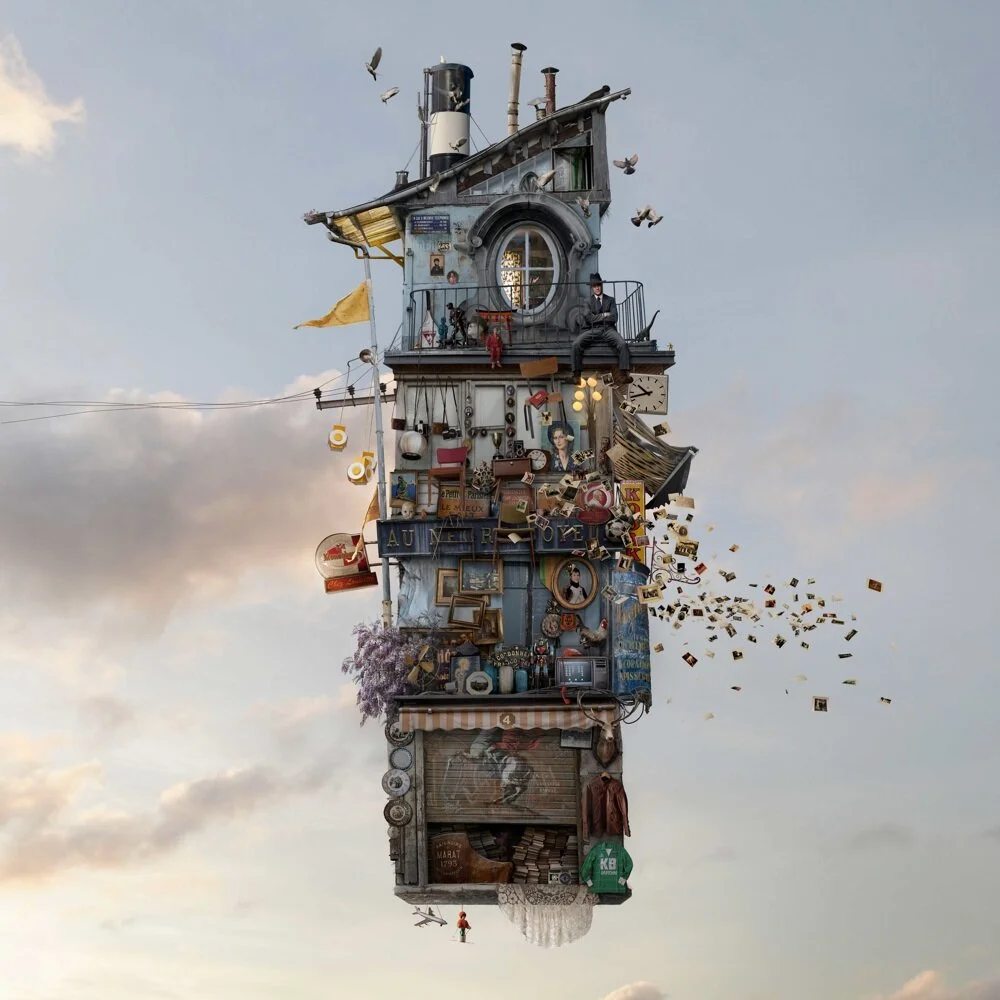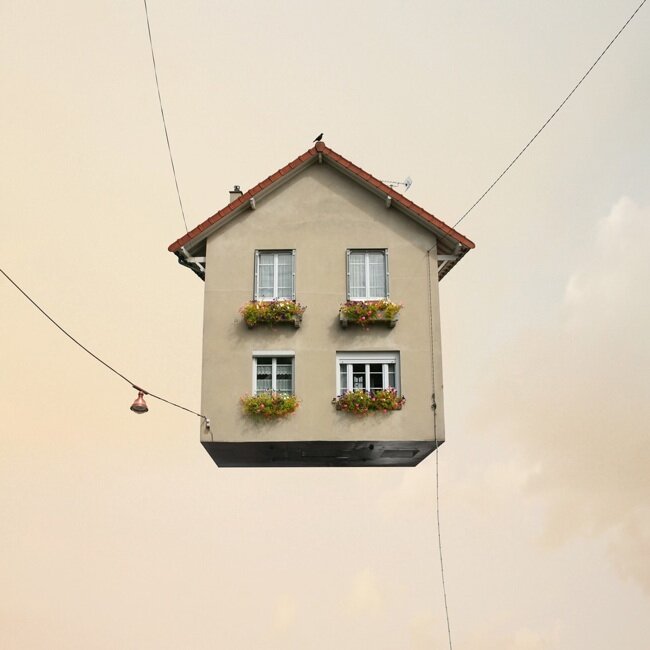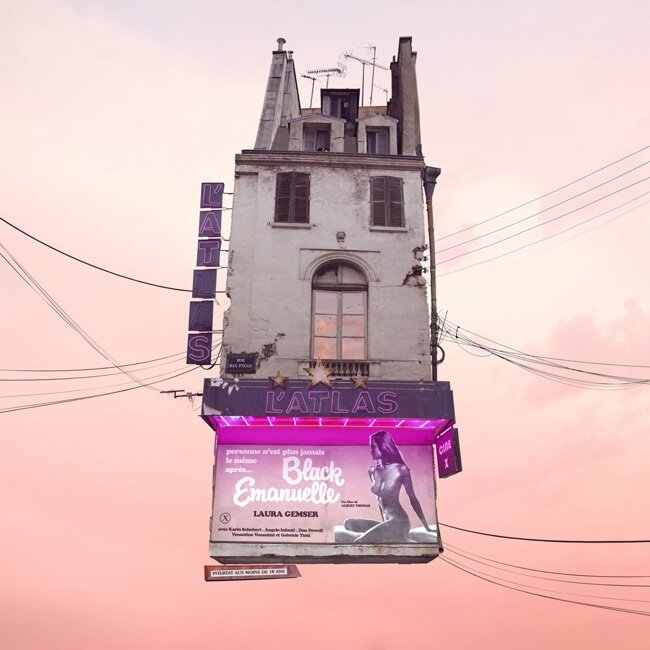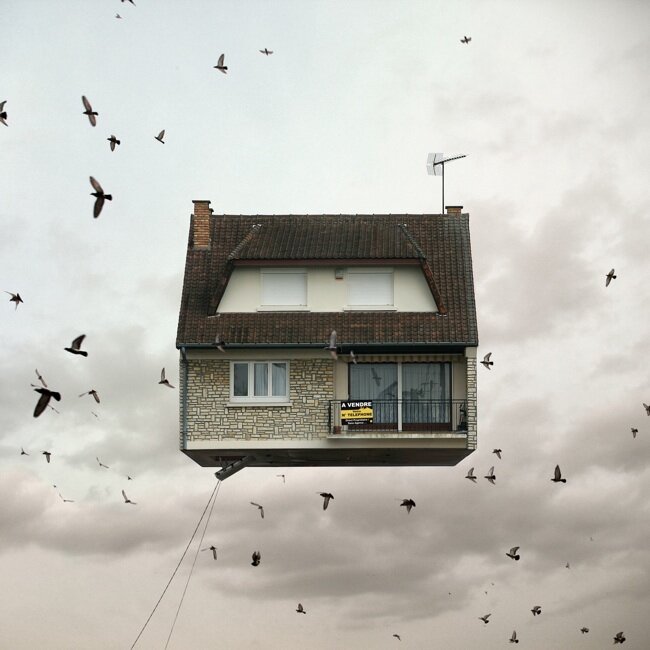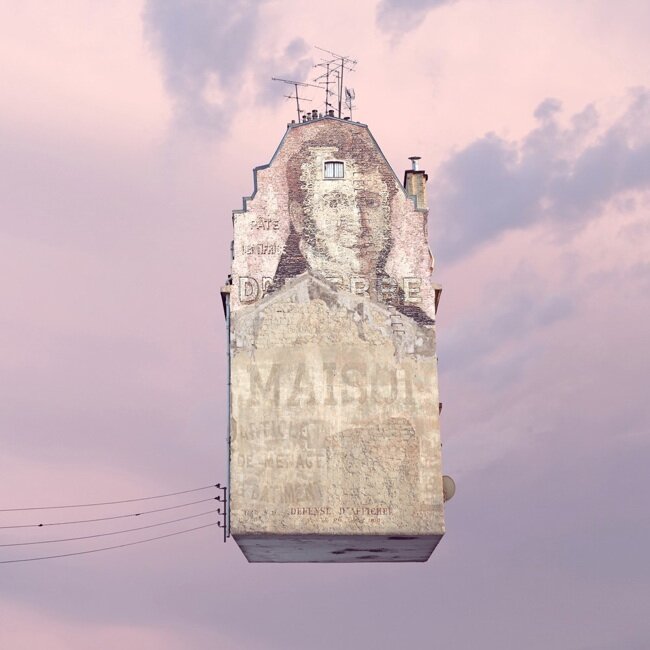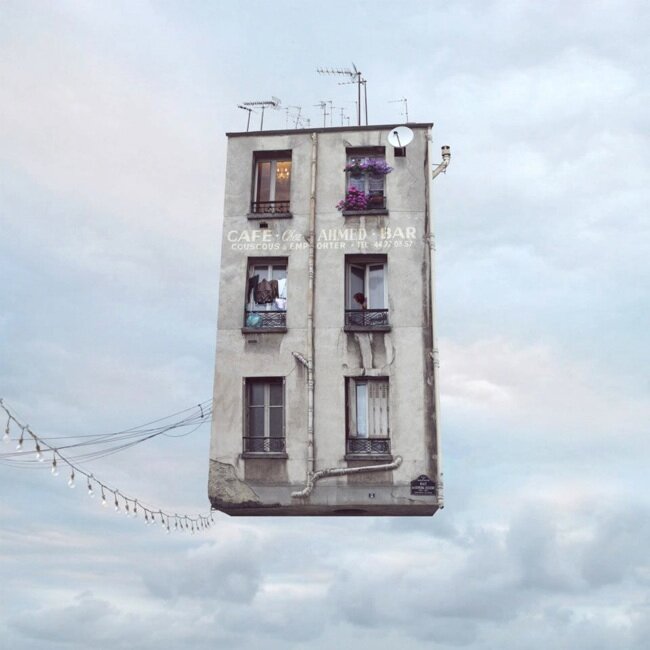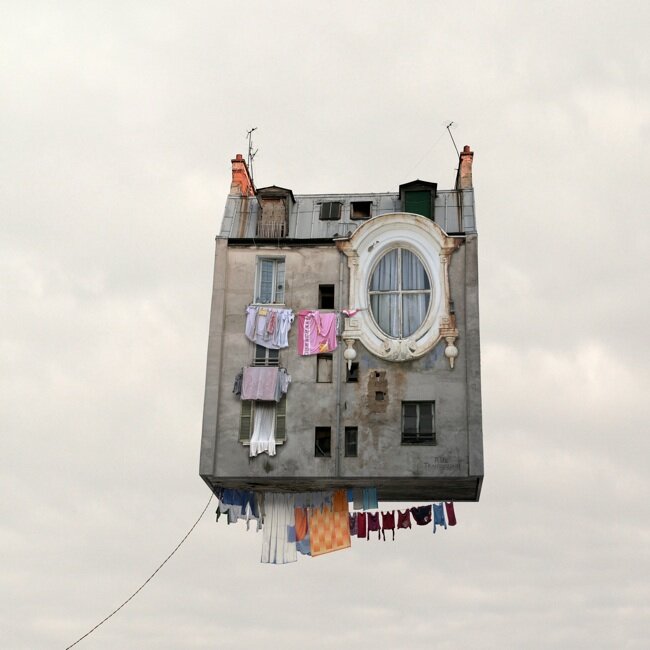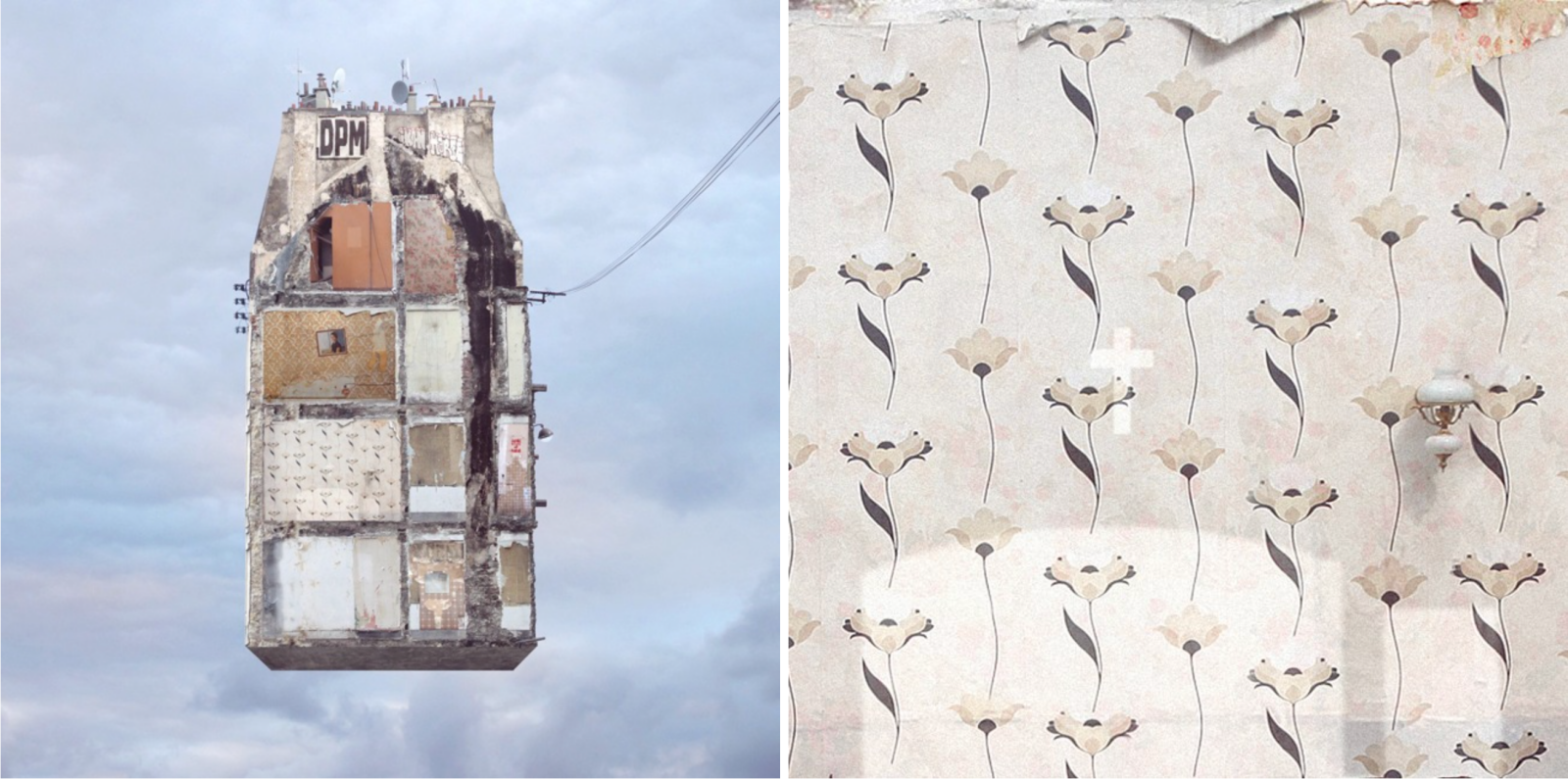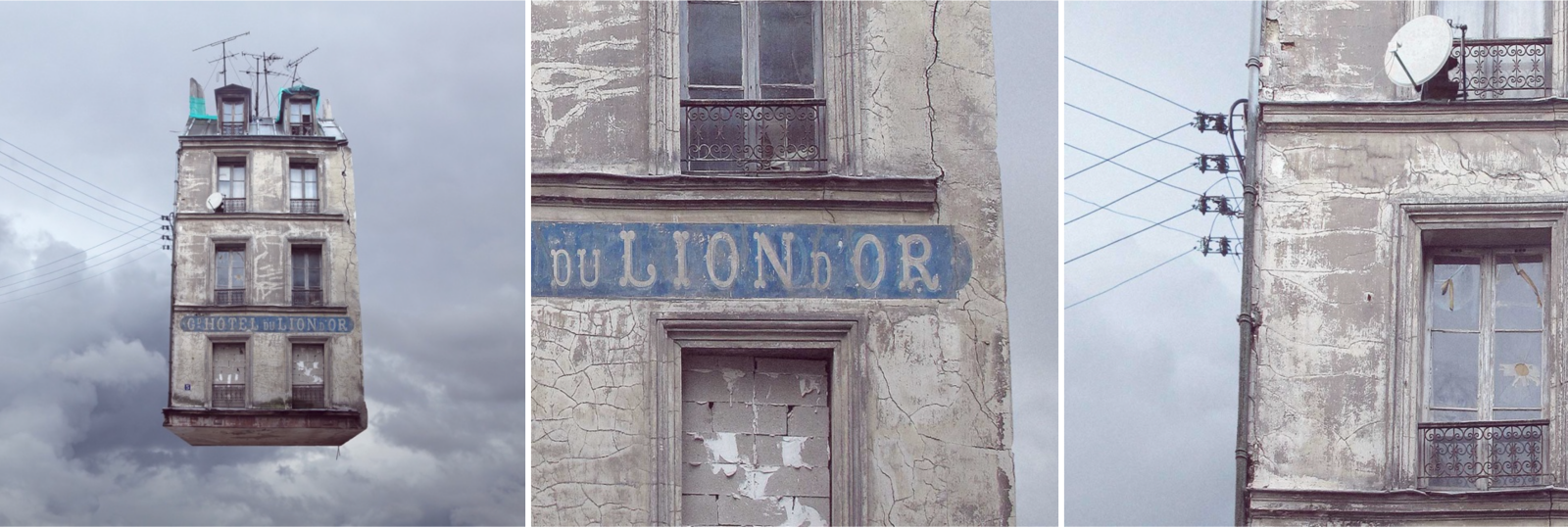When Houses Fly: Laurent Chéhère’s Nostalgic Idea Of Home
“young or old, houses have always something to say.”
“The houses and constructions that line up a street keep questioning my curiosity. They feed my imagination. So, I question the facades. I look at them like faces whose windows would be eyes. I'm looking for an expression of sadness or joy. I am looking for a humanity.”
In award-winning french photographer Laurent Chéhère’s artworks, the past with its charming old properties never disappear completely: it just flies away, slowly, hovering in the sky like a melancholic cloud.
Combining traditional photography and digital manipulation, Laurent has created the series Flying Houses: old and apparently “tired” houses in Paris free themselves from the burden of bricks and beams and just take flight. We’d say that the subtitle of the series could be "poetic observations on the city”.
It goes without saying that one of the multiple ideals behind this work, and precisely the respect for all houses’ pasts and souls, is perfectly in line with our core values: that’s why we are in love with these surreal pics!
What’s also absolutely interesting and moving in Laurent’s artworks is the fact that he isolates these houses from the anonymity of the street to tell the life, the dreams and the hopes of their inhabitants.
In “Trace”, for example, every piece of wallpaper tells a life: by taking a closer look, we perceive tracks of human presences, bed, crucifix, night table that the time printed like a photographic paper. Here Laurent becomes like an archaeologist of the life of others.
“Trace”, 2012
“Le Lion d’Or”, 2012
We like so much this form of reverence for the uniqueness of all properties with no distinctions.
That’s why we had a chat with Laurent to dig a bit more about the sense of this work and to understand what fueled his stubborn desire to defend the soul of all properties.
“Rose”, 2017
In the reportage on your website you said that you like to depict the moment before a property (or, in general, a full neighborhood) starts being renovated. Somehow you are a defender of the properties’ soul and past. Tell us more about this.
It seems to me that if we do not understand the past we cannot understand the present. The memory is as fragile and ephemeral as the pictures of families that fade over time. The first time I saw the works of Robert Doisneau and Willy Ronis on Paris, I told myself that I will take black and white photos like them and that I will go in search of the Paris they photographed. Suddenly I discovered that it no longer existed. I continued to look for this Paris in the pre-war films of Marcel Carné. In the Quai des Brume, le Jour se lève and the Hôtel du Nord, I finally discovered that all had been filmed in the studio and not in Paris. I think this observation has fueled my desire to revive missing houses and atmospheres.
Did you always have the passion for street (houses) photography? Paris (and Ménilmontant in particular) is full of charming buildings of all kinds. What does drive you to choose a property rather than another? In other words, when - for you - is a specific property/detail worth being photographed?
The houses and constructions that line up a street keep questioning my curiosity. They feed my imagination. Young or old, they have something to say. So, I question the facades. I look at them like faces whose windows would be eyes. I'm looking for an expression of sadness or joy. I am looking for a humanity. Why the paint is worn out, why the shutter does not work anymore, who builds it, for whom? Why? When? I help myself with clues like an old curtain at a window that will make me think that it is inhabited by old people; a spicy odor and a parable may indicate a distant country of origin. With all these details I try to wind up an invisible thread, to weave a link between all things, to find a truth.
“Bricabrac”, 2019
We feel, in your works, a deep human and empathic respect for all houses, even the ones that look less attractive at first glance from the outside. Somehow you show how much life there’s hidden behind each house. “Le grand jour” in this sense is touching and thought-provoking; the same goes for “Bricabrac”, with all those personal tokens and collections, old photos, dollies and other dusty knick knacks; idem for “Trace”. Do you think that houses (their walls, their windows) can ever “free” themselves from the lives and people’s emotions that they hosted?
Le Grand Jour was inspired by Una Giornata particolare by Ettore Scola. This film is the definition of what I do: taking an interest in the invisible in buildings and lives, at first sight without interest.
“Le grand jour”. 2018
Miyazaki, Lamorisse, Fellini, Klein, Wenders are just a few of your cinematographic sources of inspiration. Houses, ordinary lives, cinema: is there a link between these elements in your poetical view?
Cinema, photography and painting have the same purpose: to capture a moment, an idea, an emotion, a truth, a feeling. I don’t categorize them.
You said that “even the unremarkable architecture has the right to keep on living and to survive”. “Rue Disparue” is an amazing example: you’ve been able to freeze into time an iconic building. Is this, somehow, the ultimate sense of your work?
Yes, it is all the more true that Paris is a city crushed by the dictatorship of an architectural style: the Haussmannian. At the end of the 19th century, Napoleon III decided to modernize Paris. The medieval historic center was razed. 40,000 identical bourgeois buildings, tasteless, of the same size and height were “copied and pasted” along wide endless avenues. 150 years later, this style continues to govern architecture in Paris. Nothing should exceed. Ménilmontant my neighborhood experienced the same fate in the 70s and 80s for the same reasons. This probably explains my approach.
“Rue Disparue”, 2015
Laurent Chéhère is represented by Persiehl & Heine Gallery in Hamburg and Forni Galleria in Bologna.
What’s your concept of Home? We’re eager to hear your story.

